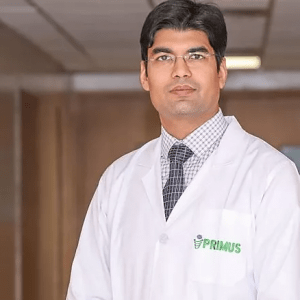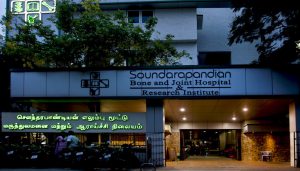WHAT IS COCCYDYNIA?
Coccydynia also called tailbone pain can be defined as a clinical condition characterized by an inflammation of the tailbone which is called the coccyx found between the buttocks and the anus, leading to pain and tenderness in that region.
The coccyx is a tiny triangular bone found at the end of the spine that resembles a tailor a bird’s beak and it functions as an insertion site for most muscles, ligaments, and tendons and aids the anus to be in position.
Coccydynia was first introduced by Simpson in 1859 around the 16th century but was mistaken for lower back pain. Etymologically, the word coccyx is a Greek word meaning “cuckoo” to describe the appearance of the tailbone. “Dynia” is a Greek word for pain hence the word coccydynia.
However, coccydynia has been quite difficult to treat due to the controversial nature of the pain that could be experienced in the coccyx region. Coccydynia pain could be dull and achy at first and becomes quite painful when you indulge in some activities such as sitting for long, rising from a seated position, defecation even sometimes when having sex.
Most of the cases of coccydynia resolve within some weeks on their own, however, there are cases in which the pain becomes chronic and lasts for months.
Coccydynia is more prevalent amongst women than men. According to recent studies, it is more likely to occur in a ratio of 5;1 between women and men respectively. In some women, it could make menstruation quite uncomfortable.
RISK FACTORS OF COCCYDYNIA
The risk factor of coccydynia is the injury or accident to the pelvic bones or the tail bone-coccyx. Others include:
- People who are obese or overweight tend to develop coccydynia more.
- Women have more probability to develop coccydynia faster than men.
- Grossly underweight people.
- Women who had to undergo vaginal birth.
COCCYDYNIA DIAGNOSIS
Coccydynia can be diagnosed through a physical examination by your doctor and the signs and symptoms you could be having.
You will be asked some questions by the doctor to find out when the pain starts, how painful is it, etc. He may recommend you do some scans such as the computerized tomography scan, x-ray, etc to check if the coccyx is fractured if the pain is chronic.
Your doctor might also examine your rectum for any abnormality.
COCCYDYNIA CURE
Coccydynia treatment aims to reduce the pain by reducing the pressure or inflammation on the coccyx and reducing the muscle tension that may have accumulated around the region.
Some cases of coccydynia could go on their own without the use of any medication. However, for coccydynia treatment, physiotherapy is required and with some coccydynia physiotherapy exercises, your healing progress is faster.
You will advise avoiding sitting on hard surfaces and advised to use a pillow to seat on a hard surface as it will help give support, balance to the buttocks and help reduce the pain.
If the pain becomes chronic, you will be administered some pain relief medications and anti-inflammatory medications to help relieve the pain. You can also be administered cortisone injections to help with the pain and symptoms.
Surgery is only recommended in very extreme cases when another treatment has failed. The surgery could entail the removal of part of the entire coccygectomy.
RECOVERY RATE
Coccydynia is very uncomfortable and can reduce the quality of one’s life. However, most people tend to recover without any medication except in cases of chronic pain but just slight adjustments in their everyday habits and exercising more often could help.
Coccydynia does not lead to death and has a high recovery rate of over 90 percent. Recovery time could take several months.
PREVENTION OF COCCYDYNIA
Coccydynia can be prevented by avoiding any injury or trauma to the coccyx or tail bone. Avoid strenuous exercises such as cycling for long periods. Avoiding sitting on hard surfaces for a long period and exercise frequently.
There are certain coccydynia treatment at-home remedies could the pain and they include;
- Application of heat through a hot bath or press a cold cloth over the tail bone area.
- Avoiding sitting for long and lean forward when sitting if you must sit
- Using stool softeners to aid reduce pain during bowel movements.
- Try wearing loose clothes
- Try messaging the area
- Using stretching exercises could also help
COMPLICATIONS OF COCCYDYNIA
The complications of coccydynia could result in rectal pain and rectal abnormalities. It could increase distress and pain during menstruation and pregnancy.
Symptoms
COCCYDYNIA SYMPTOMS
The symptoms of coccydynia include:
- Pain at the tailbone which could become worse while sitting, leaning your back while sitting, standing, etc
- Pain during defecation
- Pain during sexual intercourse
You could also experience cases of depression and anxiety due to the pain,
Causes
CAUSES OF COCCYDYNIA
Coccydynia could be caused by an injury or a trauma to that region which result in a fracture of the tail bone, sitting on a hard or narrow surface for a long time, degenerative joints changes, pregnancy, an nd vaginal childbirth as the stretch of the muscles and ligaments around the coccyx could generate pressure on the coccyx, a backward fall, etc.
It could also be caused by an irritation or injury to the sciatic nerve which is found around the region of the coccyx, infection, and shingles of the buttocks or pilonidal cyst, sacroiliitis, hypermobility or hypomobility of the sacrococcygeal joint, etc.
Also being obese can affect your coccyx as the muscles then compress the coccyx and put pressure on it and also the presence of a tumor could also cause inflammation and pressure on the coccyx resulting in pain.
FAQ
Tailbone pain or coccydynia is a very common pain, especially in childbearing women. People who are obese are more likely to develop it and adults are more susceptible than males.
- How long does coccydynia last?
Coccydynia or tailbone pains could last some weeks and at most some months with adequate care and treatment.
- Can tailbone pain or coccydynia cause rectal pain?
Coccydynia or tail bone pain can lead to rectal pain as the position of the rectum and coccyx is relative. Hence chronic coccydynia
- How is coccydynia treated in pregnant women?
Coccydynia is quite common with pregnant women due to the pressure of the fetus on the coccyx. Your therapy mat recommends that you lie on your side while sleeping and use a cushion to sit on hard or narrow surfaces.
- Does walking help coccydynia?
The pressure on the coccyx is more during periods of sitting, driving, bending, etc. however, when you are standing or walking the pressure is reduced on the coccyx as a result the pain is also reduced.



















































































































































































